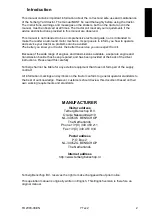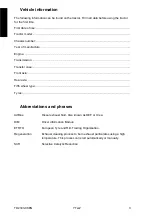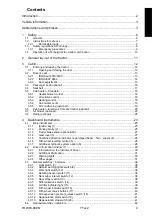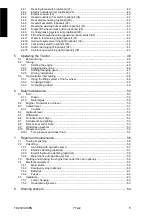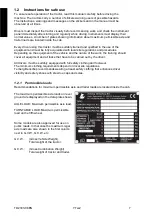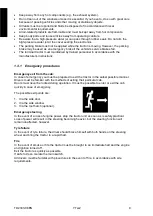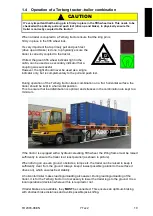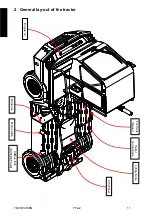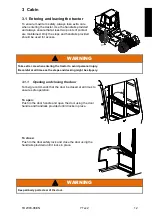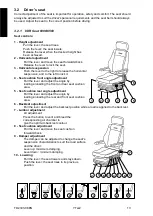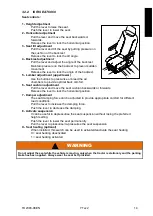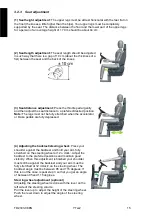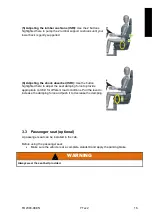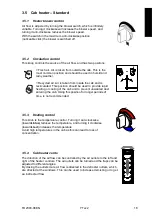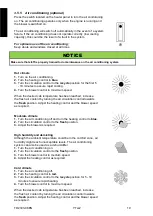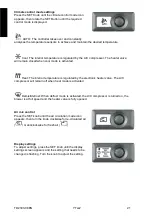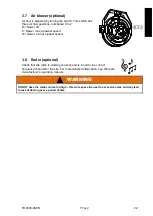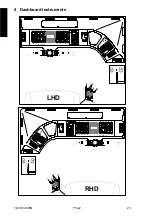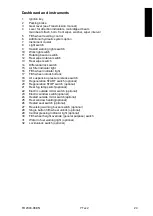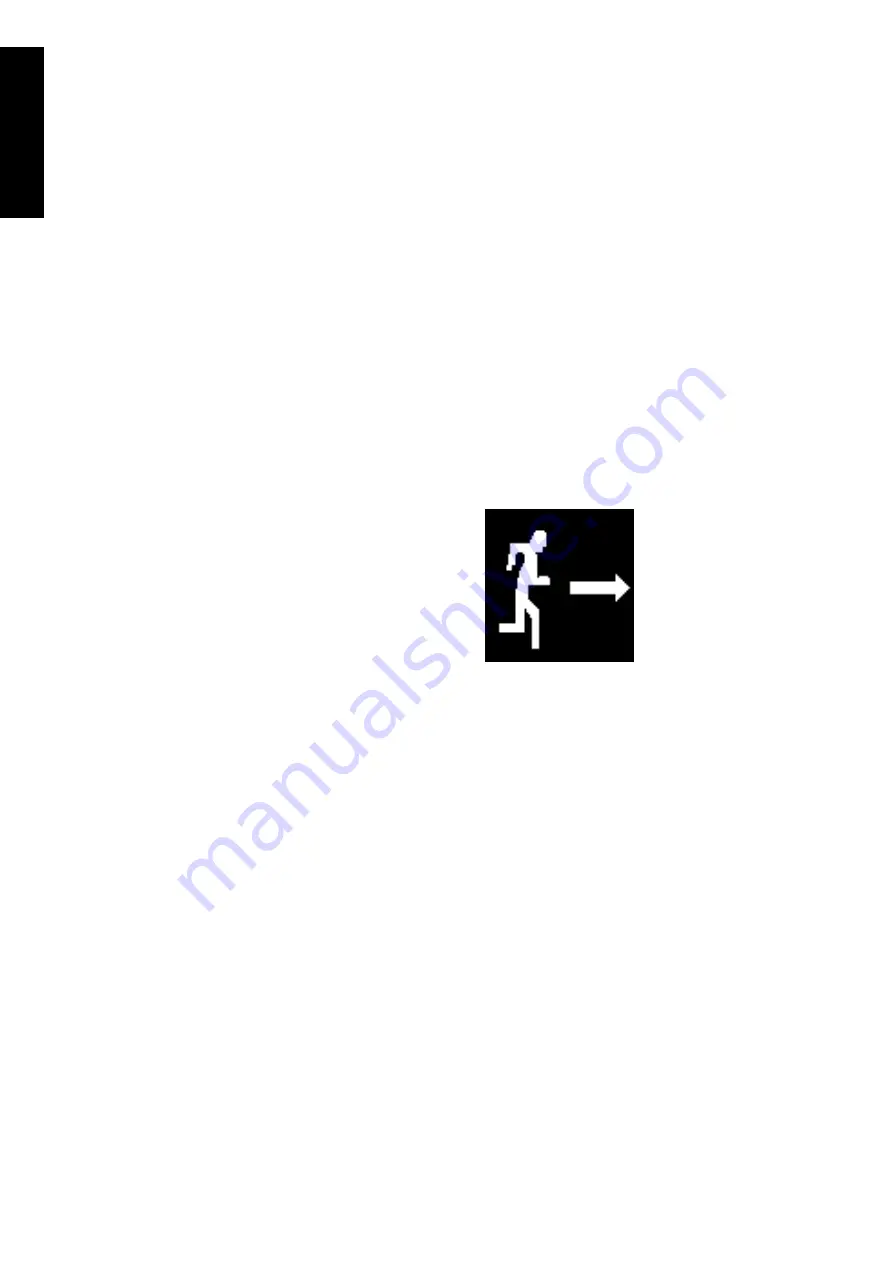
TD2303-08EN
YTxx2
9
Keep away from any hot components (e.g. the exhaust system).
Do not lean out of the windows unless it is essential. If you have to, do so with great care
because of passing vehicles and other moving or stationary objects.
All leaks must be reported and fluids be disposed of in accordance with local
environmental requirements.
All oil-related products are flammable and must be kept away from hot components.
Keep body parts and loose articles away from operating controls.
Be aware that a high-pressure water jet can pass through rubber seals. Do not aim the
high-pressure water jet at the cover sealing the electronics.
The parking brake must not be applied while the tractor is moving. However, the parking
brake may be used as an emergency brake if the vehicle's service brakes fail.
The terminal tractor must maintained by trained personnel in accordance with the
manufacturer’s instructions
1.3.1
Emergency procedures
Emergency exit from the cab:
In case of emergency you must be prepared to exit the tractor in the safest possible manner.
Drivers must be familiar with the methods of exiting their particular cab.
Doors must never be locked during operation. It must be possible to enter or exit the cab
quickly in case of emergency.
The possible exit points are:
1. Via the side door.
2. Via the side window.
3. Via the roof hatch (optional).
Emergency steering
In the event of a loss of engine power, stop the tractor unit as soon as is safely practical.
Loss of power will result in the steering becoming heavier, but the steering function will
remain unaffected, however.
Tyre failure
In the event of tyre failure, the driver should brace himself with both hands on the steering
wheel and bring the tractor to a rapid halt.
Fire
In the event of smoke or fire the tractor must be brought to an immediate halt and the engine
and ignition turned off.
Exit the tractor as quickly as possible.
If safe to do so, isolate the main switch.
All drivers must be familiar with procedures in the event of fire, in accordance with site
requirements.



